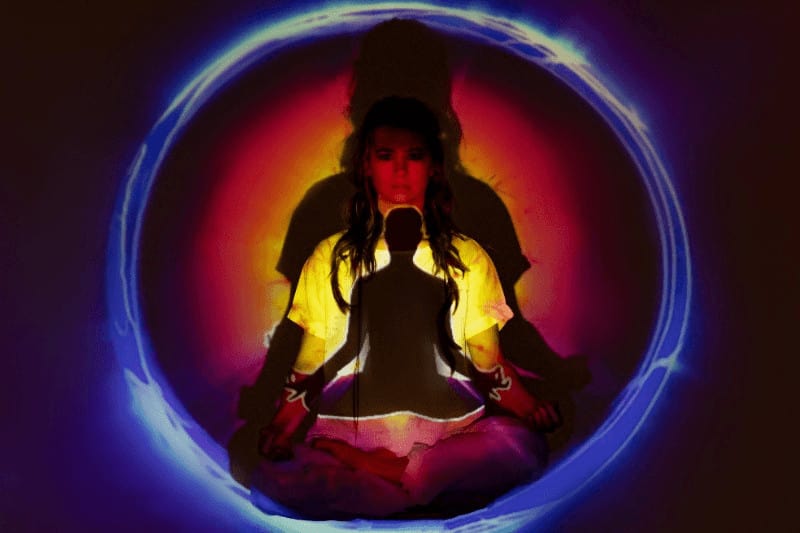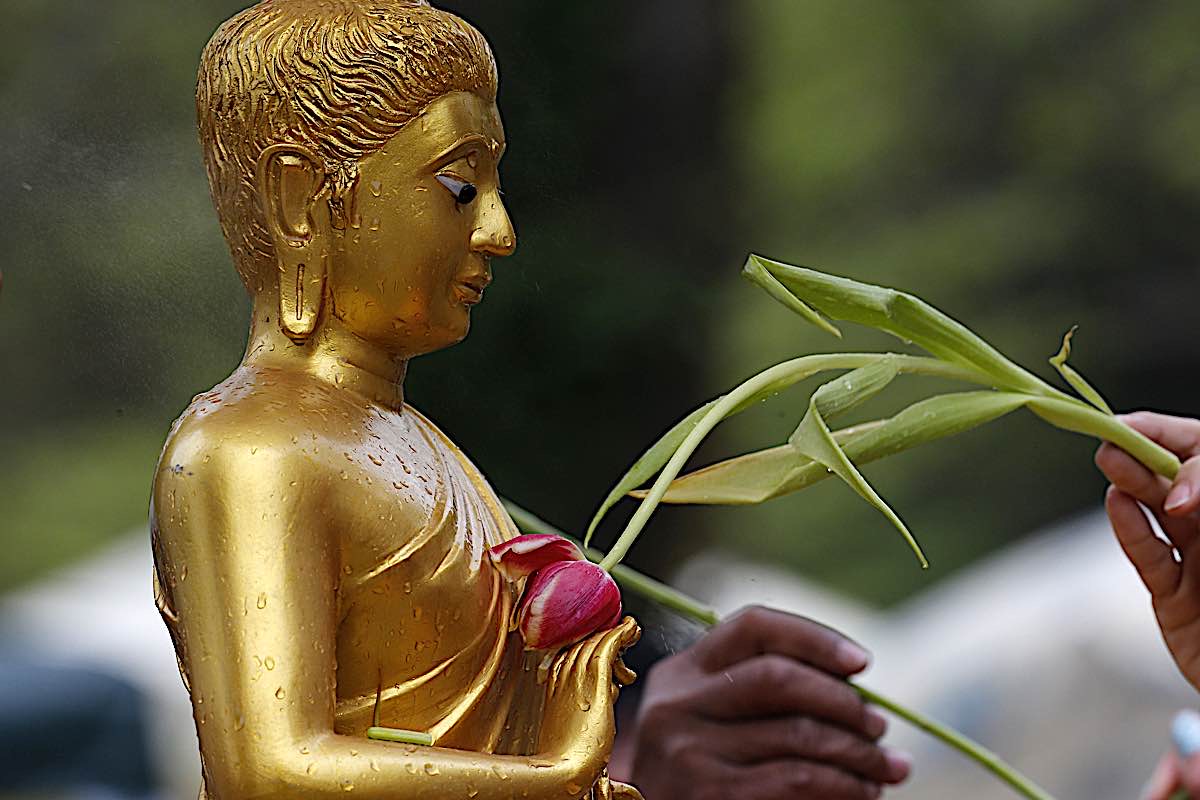Koshas Yoga: A Journey Through the Five Layers of Existence
The post Koshas Yoga: A Journey Through the Five Layers of Existence appeared first on The Yoga Nomads.

Have you ever pondered the deeper parts of your existence? Koshas yoga is a profound practice that helps us understand and navigate these inner realms. This ancient concept from yogic philosophy offers a roadmap to self-discovery, enabling practitioners to journey beyond physical experience toward blissful consciousness.
The koshas, or sheaths, are five distinct layers encompassing our physical body, energy flow, mental processes, wisdom, and bliss. Think of it like peeling back the layers of an onion. Each layer is integral to our overall well-being both on and off the mat.
In Koshas Yoga, we learn how to integrate these different aspects of ourselves for holistic wellness. It’s not just about performing asanas; it’s about cultivating awareness across all levels of existence –from material reality to subtle spiritual dimensions.
As we explore each kosha, tuning in with our energy centers and becoming aware of our life force energy, we foster a deep connection with our true nature. So — are you ready to journey through your inner world? Follow along as we peel back the subtle layers of who we are to discover our true selves!
Origin and Significance of the Koshas
The Koshas have their roots in ancient Indian philosophies, specifically the yoga sūtras and the Upanishads. These age-old teachings suggest that the purpose of the Koshas is to steer practitioners toward a state of pure consciousness through self-discovery. This can be accomplished by balancing the life force energy, or prana, throughout each layer of the self.
According to yoga philosophy, humans contain five layers or sheaths called “koshas.” These layers represent different aspects of an individual’s existence, including the spiritual, mental, and astral bodies.
So, exploring the koshas is discovering the energetic elements within the physical human body and developing awareness of the non-tangible, subtle body.
Is your head spinning yet? Don’t worry — this philosophy stuff can initially be tough to grasp. In the next section, we’ll break everything down, one layer at a time!
The Five Koshas: Layer by Layer
The five different sheaths range from the material body to the spiritual body. Let’s start from the outside and get to know each layer more deeply. We’ll give a detailed description of each kosha, including its role in everyday living.
1. Annamaya Kosha: the Physical Body
As the outermost layer, Annamaya is the tangible aspect of self. It represents our physical bodies, the flesh and bone structure that we can sense and touch. This is an element that our mind can perceive. Our physical body is often what we identify with when thinking about ourselves.
Connection with Food and Health
This layer has a deep connection with nourishment; thus, it is sometimes called the “food sheath.” What we consume directly affects our physical well-being. For example:
Eating healthy nourishes the body, leading to strength, vitality, and an energy boost. Consuming junk food can lead to various health problems, impacting your physical body’s energy and affecting your ability to connect with deeper parts of your being.It’s not just about the type of food we consume for energy but also how, when, and why we eat. By practicing mindful eating, you’ll notice a difference in your physical body and overall experience.
Balance for Overall Health
In koshas yoga, it’s believed that an imbalance in this outermost layer can affect other layers, too, causing mental or emotional disturbances. Maintaining balance throughout all the body’s subtle layers, beginning with this physical sheath, is crucial for overall wellness. Here are some ways to take care of your material body:
Regular exercise keeps the body fit and active. Proper rest allows the body to recover and rejuvenate. A balanced diet provides the necessary nutrients to function optimally.To sum up, caring for your body should be a priority in everyone’s life as it lays the foundation for all other aspects of self-discovery.
2. Pranamaya Kosha: the Vital Energy body
The next layer is Pranamaya or the energy body. This layer relates to prana, the vital life energy flowing through all living beings. While the concept of prana is often associated with breath, it includes more than just the physical breathing of your body; it’s about learning to control and balance this life force coursing through you.
The Breath-Pranamaya Connection
Breath control, or pranayama, is intrinsically linked with the pranamaya kosha. As we deepen our meditation practice and develop body awareness, we learn breath-regulation techniques that balance our energy channels.
These terms look pretty similar, but don’t get them confused!
Pranamaya: the name of the second kosha, the vital energy body. Pranayama: breathing practices used in meditation to balance prana or life force energy.Influence on Emotions and Mood
The pranamaya kosha, closely linked to our material body, undeniably impacts our emotions, mood, and stress levels.
Emotions: A balanced energy body can help manage emotional turmoil. Techniques like deep breathing can calm the mind, stabilize mood swings, and relax the body. Mental activity: Focused meditation, like breath awareness practices, can improve concentration, quiet the mind, and lead us toward samādhi or pure consciousness. Stress Levels: Controlling your breathing during meditation reduces stress hormones.Understanding and working with your body’s pranamaya kosha through practices like meditation allows you to tap into your inner world more effectively. Stay consistent with this inner work, and you’ll find yourself delving deeper into self-awareness.
3. Manomaya Kosha: the Mental Body
Manomaya,
or the mental sheath, encompasses our thoughts, emotions, and personal narratives. This layer of our body is where we process everything we experience.
Thoughts: The internal dialogues that constantly occur within our mind. Emotions: Every feeling that arises, along with thoughts related to each emotion. Personal narratives: Everything from how we perceive ourselves to judgments we make about the actions of others.Connection with Subconscious Mind
The body’s manomaya kosha is deeply connected with the subconscious mind and memory processing. This connection allows for:
Dreaming: During sleep, manomaya interacts with subconscious thoughts. Memory Recall: It aids in remembering past events and learned information. Subconscious Processing: Unresolved issues or suppressed emotions may surface here.Impact on Perception and Decision-Making
Understanding manomaya has profound implications on perception, reactions, and decision-making processes. Here’s how:
Perception: Your mental sheath shapes how you interpret your surroundings. Reactions: It influences your responses to external stimuli. Decision-Making Processes: Manomaya guides your choices based on previous experiences and current emotional state.In essence, the manomaya kosha is essential in shaping our reality by influencing our internal world of thoughts and emotions and our interactions with the external environment.
4. Vijnanamaya Kosha: The Wisdom Body
Continuing through the spiritual body, we find Vijnanamaya Kosha, the wisdom sheath. This next layer relates to consciousness and governs three essential elements of awareness.
Discernment: The wisdom body is responsible for our ability to distinguish between right and wrong. It helps us make informed decisions by analyzing information from our gross body and vital energy sheaths. Intuition: Our intuition comes from this subtle layer. It’s like an inner voice guiding us through life’s complexities. The more we tune into this sense of knowing, the stronger our intuition becomes. Insight Development: Vijnanamaya Kosha aids in developing knowledge of our inner world and the world around us. These insights contribute to our spiritual growth and self-realization.This kosha, along with Pranamaya and Manomaya, comprise the subtle body, which bridges the lower layers of physicality and emotionality with the higher level of pure bliss.
5. Anandamaya Kosha: the True Self
Finally, this next layer concludes our inner journey through the koshas! Anandamaya kosha is also known as the bliss sheath. It is our source of joy and connection to our state of pure consciousness and spiritual oneness (samādhi).
The Bliss Body
Represents deep-seated happiness Unaffected by worldly situations Connects to profound meditation states Tuning into awareness and knowingIn koshas yoga, Anandamaya is considered the deepest layer, the culmination of all your inner work. It’s not about temporary happiness but an enduring sense of contentment.
Through regular practice and understanding each layer’s significance, practitioners can tap into this blissful body’s potential, leading to overall well-being and tranquility.
Koshas in Review: A Study Guide
We know that yoga philosophy can be a lot to take in, especially when these principles have several different names or include complicated Sanskrit words. So, we’ve broken everything down for you in a handy table to use as a study guide!
Below, you’ll find each kosha listed along with its various names, category of body type, and the element each kosha associates with.
| Kosha Name | Also Called | Body Type | Element |
| Annamaya | Food sheath, physical sheath, the gross body, the outermost layer | Material body, physical body | Earth |
| Pranamaya | Vital energy sheath, energy body, life force layer | Astral body, subtle body | Water |
| Manomaya | Mental body, thought sheath | Astral body, subtle body | Fire |
| Vijnanamaya | Wisdom body, higher knowledge body | Astral body, subtle body | Air |
| Anandamaya | Bliss body, spiritual body, innermost layer | Causal body, seed body | Space |
If you’re ready to dive deeper into your knowledge of the koshas and eight limbs of yoga, why not learn it directly from the source? You can pick up a copy of Patanjali’s Yoga Sūtras, where you’ll learn all about meditation, concentration, and the energetic principles that govern the human body.
Koshas Yoga for Self-Discovery

Incorporating knowledge of the koshas and yoga philosophy offers an insightful path toward self-discovery.
Unveiling the Layers
Within a yoga or meditation practice, the koshas facilitate an exploration through different layers of the self.
An individual embarks on a journey to unravel their true self. Over time, one notices the wisdom that resides within each layer. This knowledge provides space for understanding oneself better.Personal Growth Through Balance
Koshas yoga addresses imbalances across different energy states within the body. Tuning in to subtle energy allows individuals to identify specific areas needing attention and growth. By focusing on these aspects, the person can cultivate a sense of ease and harmony across all energetic bodies.Holistic Wellness Integration
Incorporates all aspects of being into the practice of yoga. Promotes inner harmony and holistic wellness by integrating physical, mental, and spiritual experiences. With consistent practice over time, ease becomes your true nature.Koshas Yoga is not merely about physical postures or breathing exercises. It delves deeper into the realm of self-awareness and realization. The path may seem challenging initially, but with persistence and patience, it unfolds the peace and tranquility that lie within.
Benefits of Exploring the Koshas

Enhanced Mindfulness
Getting to know yourself on a deeper level offers numerous benefits. One key advantage is enhanced mindfulness, which can significantly improve mental health outcomes.
Reduced anxiety symptoms: By focusing on the present moment, yogis can alleviate their worries and fears. Decreased depression symptoms: Koshas yoga gives insight into your experience and can help you separate a negative thought or feeling from your spiritual body, reducing the effects of sadness and hopelessness.Boosted Physical Health
The koshas also play a vital role in boosting physical health.
Improved wellness practices: Through Annamaya (the physical sheath), yogis bring awareness to their physical body and feel encouraged to make healthy choices. Enhanced energy flow: Pranamaya kosha (the vital energy sheath or life-force layer) aids in regulating essential bodily functions like respiration and digestion, leading to increased vitality and strength.Spiritual Growth
Lastly, exploring the koshas fosters spiritual growth through deeper self-awareness and realization.
Intellect and intuition: Vijnanamaya (the wisdom layer) helps yogis understand their true nature, fostering personal growth. Inner peace: Anandamaya kosha (the bliss layer) promotes oneness and contentment by connecting yogis with their highest selves. In yoga philosophy, this is also called samādhi.Wrapping up Koshas Yoga Practice
Exploring the five layers or ‘Koshas’ in yoga philosophy is a transformative journey towards self-discovery and holistic wellness. It provides an insightful understanding of our physical, energetic, mental, intellectual, and blissful states. Koshas Yoga can lead to profound self-awareness and enhanced overall health.
Embracing this practice could be your stepping stone to achieving a balanced mind-body connection. So why wait? Start your journey with Koshas Yoga today. Remember, every step taken towards understanding these layers is a step closer to inner peace and harmony.
FAQ 1: What are the benefits of practicing Koshas Yoga?
Practicing Koshas Yoga helps promote self-awareness, stress management, emotional balance, mental clarity, and physical health. It provides a holistic approach towards wellness by addressing not just the physical but also the energetic, mental, intellectual, and blissful aspects of our being.
FAQ 2: Is it necessary to practice all five koshas together?
While it’s beneficial to understand and work on all five koshas for comprehensive growth and well-being, you can choose to focus on one at a time based on your personal needs or comfort level.
FAQ 3: Can beginners start with Kosha yoga?
Absolutely! Beginners can definitely start their yoga journey with the practice of kosha yoga. However, having some basic knowledge about traditional yoga postures might be helpful. You can use our helpful Yoga Poses for Beginners guide to get started!
FAQ 4: How often should I practice Kosha Yoga?
The frequency of practice depends mainly on individual preferences. Some people may find daily sessions beneficial, while others might prefer practicing a few times per week. Either way, remember that consistency is vital. Create a system that works for you, and stick to it!
FAQ 5: Does practicing koshas yoga require any special equipment?
No special equipment is required for practicing koshas yoga. A quiet space where you feel comfortable is ideal for this form of yoga.

 Koichiko
Koichiko 























![AI Content Is 4.7x Cheaper Than Human Content [+ New Research Report]](https://ahrefs.com/blog/wp-content/uploads/2025/06/ai-content-is-4.7x-cheaper-than-by-ryan-law-data-studies.jpg)







